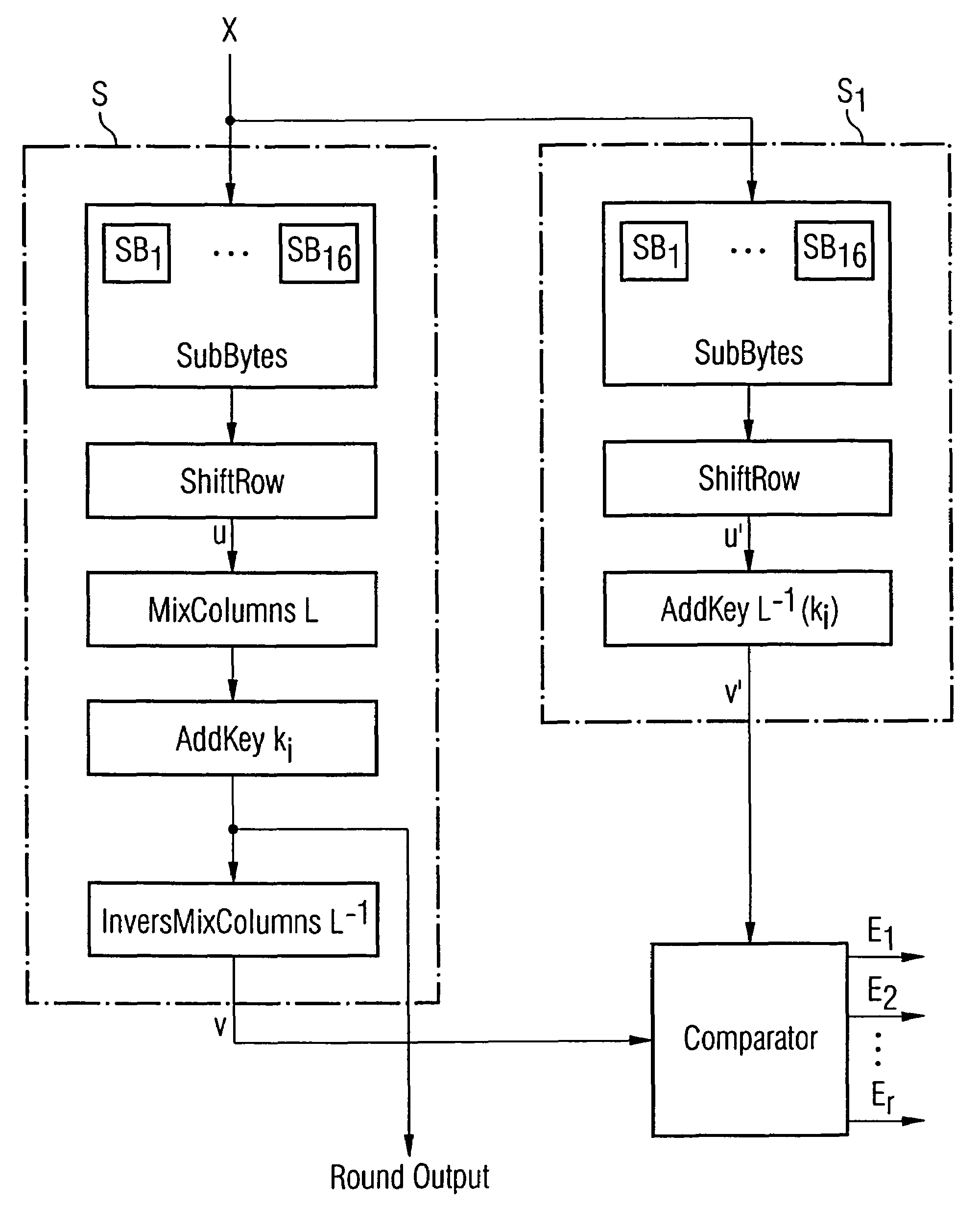Cryptographic unit and method for operating a crytographic unit
a crytographic unit and unit technology, applied in the field of cryptography, can solve the problems of affecting the operation of the crytographic unit, so as to achieve the effect of improving the characteristi
- Summary
- Abstract
- Description
- Claims
- Application Information
AI Technical Summary
Benefits of technology
Problems solved by technology
Method used
Image
Examples
Embodiment Construction
[0076]In the following description of the figures, equal or similar elements are referred to by equal or similar reference numerals, a repeated description of these elements being omitted.
[0077]Initially it is to be noted that the encryption of the data by the AES algorithm is performed in a predetermined number of successive rounds depending on the key length, which are consecutively numbered. Thus, the number of the rounds in the AES is, for example, 10, 12 or 14, respectively (with the numbers 1 to 10, 12 or 14, respectively), depending on a key length of 128, 196 or 256 bits, respectively. In the rounds 1 to the next to last round, there are performed the operations SubBytes in S-boxes, ShiftRow, MixColumns and AddKey (or AddRoundKey), in the last round the operation MixColumns is omitted. If, for example, we assume a word width of n=128 bits, the operation SubBytes is realized by 16 S-boxes each having an input word width of 8 bits and an output word width of 8 bits. The operat...
PUM
 Login to View More
Login to View More Abstract
Description
Claims
Application Information
 Login to View More
Login to View More - R&D
- Intellectual Property
- Life Sciences
- Materials
- Tech Scout
- Unparalleled Data Quality
- Higher Quality Content
- 60% Fewer Hallucinations
Browse by: Latest US Patents, China's latest patents, Technical Efficacy Thesaurus, Application Domain, Technology Topic, Popular Technical Reports.
© 2025 PatSnap. All rights reserved.Legal|Privacy policy|Modern Slavery Act Transparency Statement|Sitemap|About US| Contact US: help@patsnap.com



